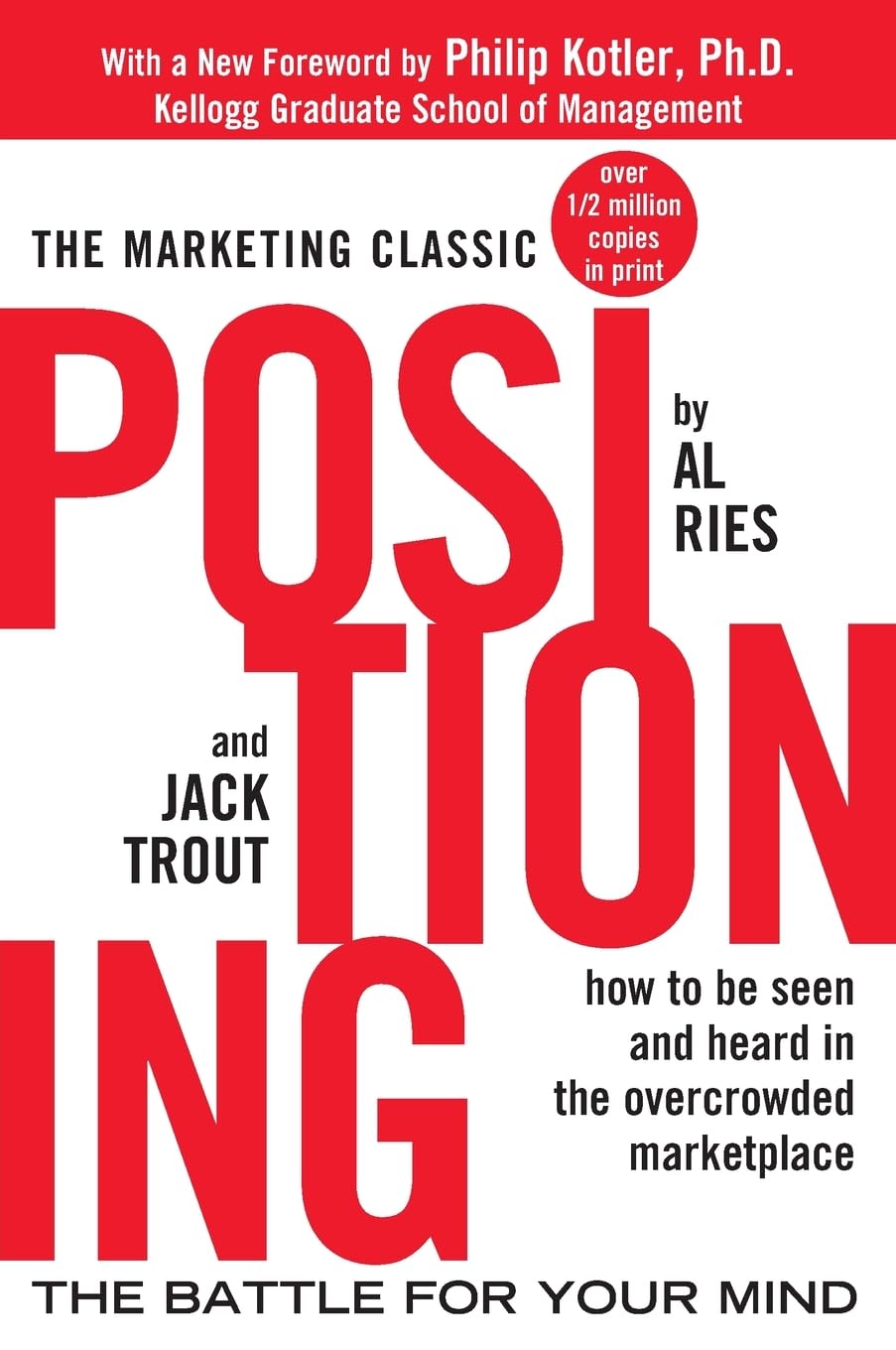This Week’s Book: Perception Marketing
Last week I shared the 22 timeless principles of marketing that I learned from Al Ries and Jack Trout’s book (see here). I enjoyed that book and wanted to learn more, especially about positioning (i.e., perception), so I read their book Positioning, which focuses on how to get noticed and be perceived in the way you’re trying to be perceived.
This book came out in 1981. Ries and Trout argued that positioning was a new way of communicating that works well for advertising, politics, and other areas. “Positioning is what you do to the mind of the prospect,” they said. “That is, you position the product in the mind of the prospect.” It’s a way for companies, products, or services to be heard and seen in a world full of ads.
My key takeaway is that positioning focuses on leveraging what’s already in someone’s mind (instead of trying to introduce a new idea). You begin by concentrating on people’s perceptions and work backward to figure out how to message in a way that aligns with what they already think (this is the opposite of how most people approach marketing). Positioning “manipulates what’s already up there in the mind, to retie the connections that already exist.” It leverages the fact that people are bombarded with so much information that they discard most of it unless it matches their existing knowledge or experience. Don’t try to jam something new into someone’s mind; reconfigure what’s already there.
The book went further, saying that oversimplifying is the key to being received and you should focus on being narrow and selective with your messaging.
The book has 23 chapters, each dedicated to a distinct aspect of the positioning strategy. Several case studies in each chapter support the concept being covered.
Marketing is foreign to me, but this book, combined with The 22 Immutable Laws of Marketing, was helpful. They lay out the principles and strategies of marketing, which I never understood. When I view certain marketing tactics through the lens of what’s in these books, things make a lot more sense.
If you want to learn how to get people to think about something in a certain way, consider reading Positioning.




